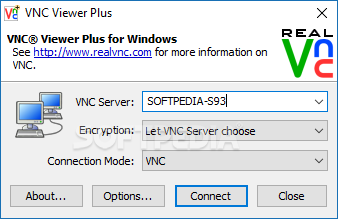

Alternatively, you may be able to obtain one by installing third party software such as PowerBroker Identity Services or Centrify, designed to integrate with Active Directory. Note that a suitable library may already be present on your system, for example /usr/lib/x86_64-linux-gnu/libldap-2.4.so.2 under Ubuntu, /lib64/libldap-2.4.so.2 under CentOS, or /usr/lib/libldap.dylib under Mac. Under Linux or Mac, obtain a LDAP-compatible library. Under Linux, configure VNC Server to identify the domain controller hosting the LDAP server.Įither set the VNC Server LdapCertificateUserStore, LdapCertificateIntermediateStore and LdapCertificateTrustStore parameters, or configure the LDAP server itself by adding HOST to the LDAP library’s configuration file (for example, /etc/ldap/nfunder Ubuntu or /etc/openldap/nf under CentOS). You may also need to qualify usernames with the domain name, for example: \johndoe. Note prior configuration is required to register domain accounts under Linux. Setting the VNC Server Permissions parameter.Opening VNC Server’s Options > Users & Permissions page and following these instructions.Register the user accounts of all prospective VNC Viewer users with VNC Server, either by.Open VNC Server’s Options > Security page and select Smartcard/certificate store from the Authentication dropdown.Make sure the computer is joined to a domain managed by Active Directory and enable the Active Directory Certificate Services role on at least one domain controller. Setting up the VNC Server computer Configure Active Directory


 0 kommentar(er)
0 kommentar(er)
